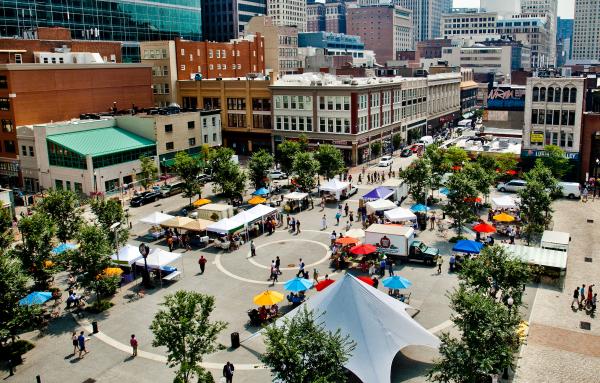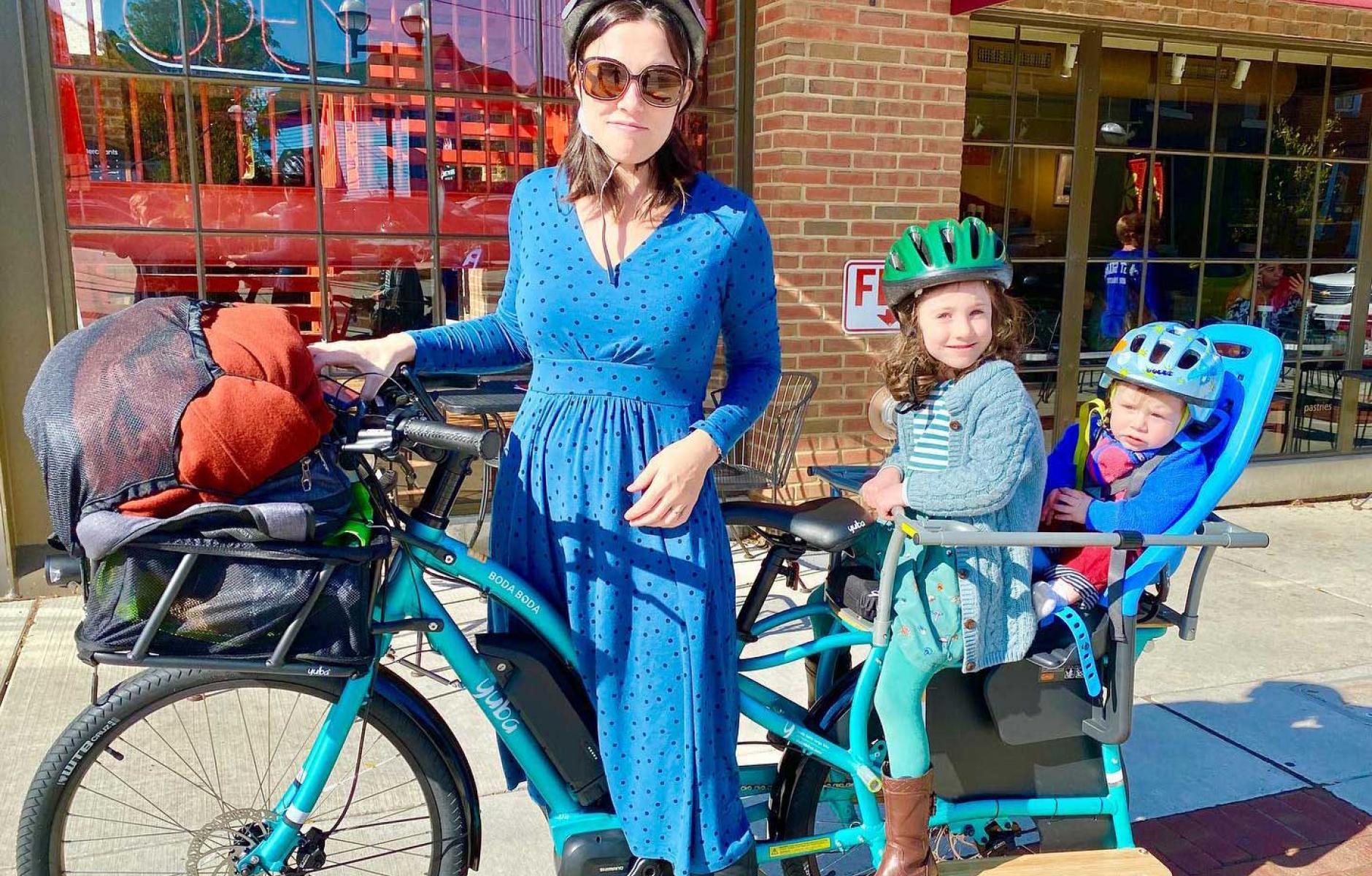
‘Little Vehicles’ and the streets that love them
It was hot. We were tired. After an afternoon of shopping on Austin’s South Congress Avenue, we were ready to call a ride-hailing service to carry us on the short trip back to our hotel when we saw them: two bright red electric scooters winking at us from the side of the sidewalk. In what seemed like only a few minutes—very fun minutes, I might add—we were home.
Austin is literally buzzing with people whizzing around on scooters, and it’s no wonder—they make so much sense. In Austin, it can be a little too far to walk, or it can be uncomfortable, primarily because of the heat, but for short trips, a car doesn’t make sense either—it can be difficult to drive because of traffic congestion and the hassle of parking. In the US, nearly half of all car trips are less than three miles, and twenty percent of car trips are under one mile. We end up lugging around two-ton SUVs designed for long haul high-speed journeys on even the shortest urban trips, with average speeds under 20 mph.
For these kinds of trips, we need an alternative to the car. Traditionally that alternative has been the bicycle. Bicycles have many of the attributes of a personal vehicle: they are available when you want them, go where you want to go, and allow you to travel some distance. They also have some advantages over cars. They are easy to park—usually you can ride right up to your destination and park out front. And biking can be efficient: one analysis of several cities found that biking is the fastest means of travel during rush hour. Bikes afford mobility to populations who cannot access a car—they cost much, much less than a car, and they can be operated by children and teenagers too young to drive. They are clean and quiet, they do not pollute, and they pose far less danger to others than a car.
But bicycles have disadvantages as well. They require physical effort, especially on hills. They expose the rider to the weather. It can be difficult to carry cargo or passengers on a bike. Now, however, new kinds of bikes and other light vehicles seek to overcome these obstacles. Benjamin Schneider at CityLab calls these “Little Vehicles.” (The industry term is “micromobility,” but “Little Vehicles” is so much clearer and to the point.) Little Vehicles include not only bikes and scooters, but e-bikes, velomobiles, motorized skateboards, unicycles, “hoverboards,” and other small, battery-powered low-speed not-a-cars. Advances in battery-powered electric motors have the potential to make these modes a viable mode for more people. Electric motors mean less physical exertion is required than riding a traditional bike, or even walking. A diversity of vehicle designs, including cargo bikes, recumbents, bikes with protective shells, small or folding scooters and skateboards that can be carried, are fitting the needs of more people and more trips.
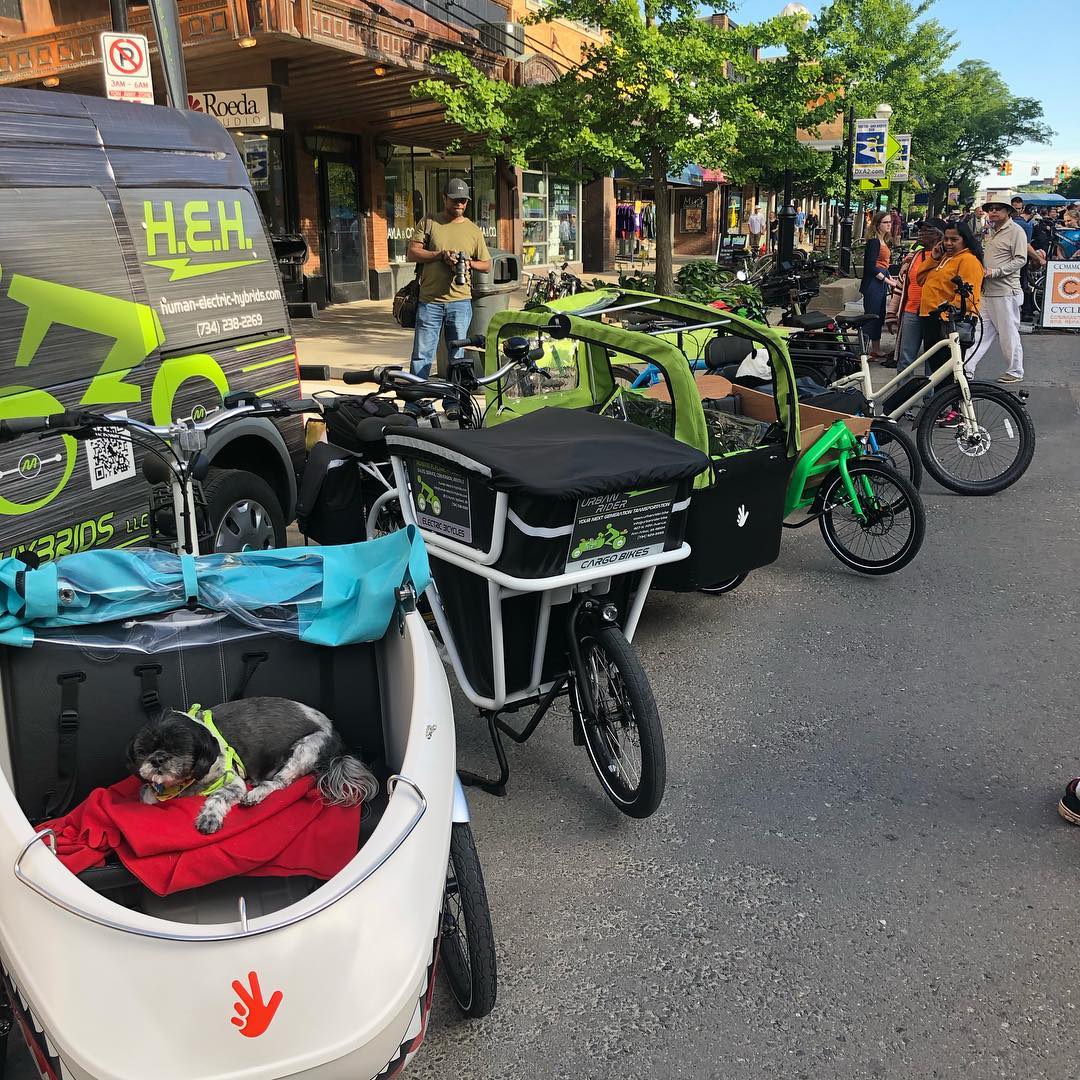
Detroit now has Adaptive MoGo, the first adaptive bike-share fleet in the US, with seven different types of bikes, including cargo tricycles, recumbents, hand-powered tricycles, and tandems. Electric scooter shares are also branching out, and offering mopeds, recumbent bikes, and trikes as shareable options. Boaz Bikes, a small startup focused on safer scooting, is promoting seated scooters that come with helmets, side mirrors and turn signals. Bird has unveiled a larger seated scooter that can carry two people. Lime is developing an enclosed electric vehicle that could carry one or two people, resembling an electric rickshaw or a deluxe golf cart. Veemo, in Canada, is already there, having piloted shared enclosed electric trikes at the University of British Columbia.
A number of manufacturers have come out with seated electric scooters that fold up to be carried or pushed like a wheelie backpack, allowing them to be taken onto a bus or train for that last mile home from the station. The portability of electric skateboards and unicycles make those vehicles popular as well. I saw many of these in use in hilly La Jolla, in southern California where skateboard culture was invented. In La Jolla, distances are often too far to walk, but bikes don’t work well—streets don’t have bike lanes and pedestrian paths are interrupted by stairs. With skateboards and unicycles, riders can power up the hills, hop off and carry their board when they encounter stairs, then tote it into the building when they’ve arrived at the office, without breaking a sweat. Some unicycles even fold up to look like briefcases.
Little Vehicles are addressing some of the practicality and comfort issues that have kept people from giving up their cars. In Ann Arbor, where I live, I regularly see parents ferrying children in electric cargo bikes. A step up are velomobiles—solar-powered, enclosed tricycle-carts. The inventor of the ELF velomobile, Rob Cotter, came up with his idea while working as a consultant for New York City’s bikeshare program. He realized that as the city expanded its bike infrastructure there would be demand for a different kind of bike, one that could protect the rider from weather and carry cargo, without requiring too much physical exertion. In other words, a bicycle with all of the comfort and convenience of a car.
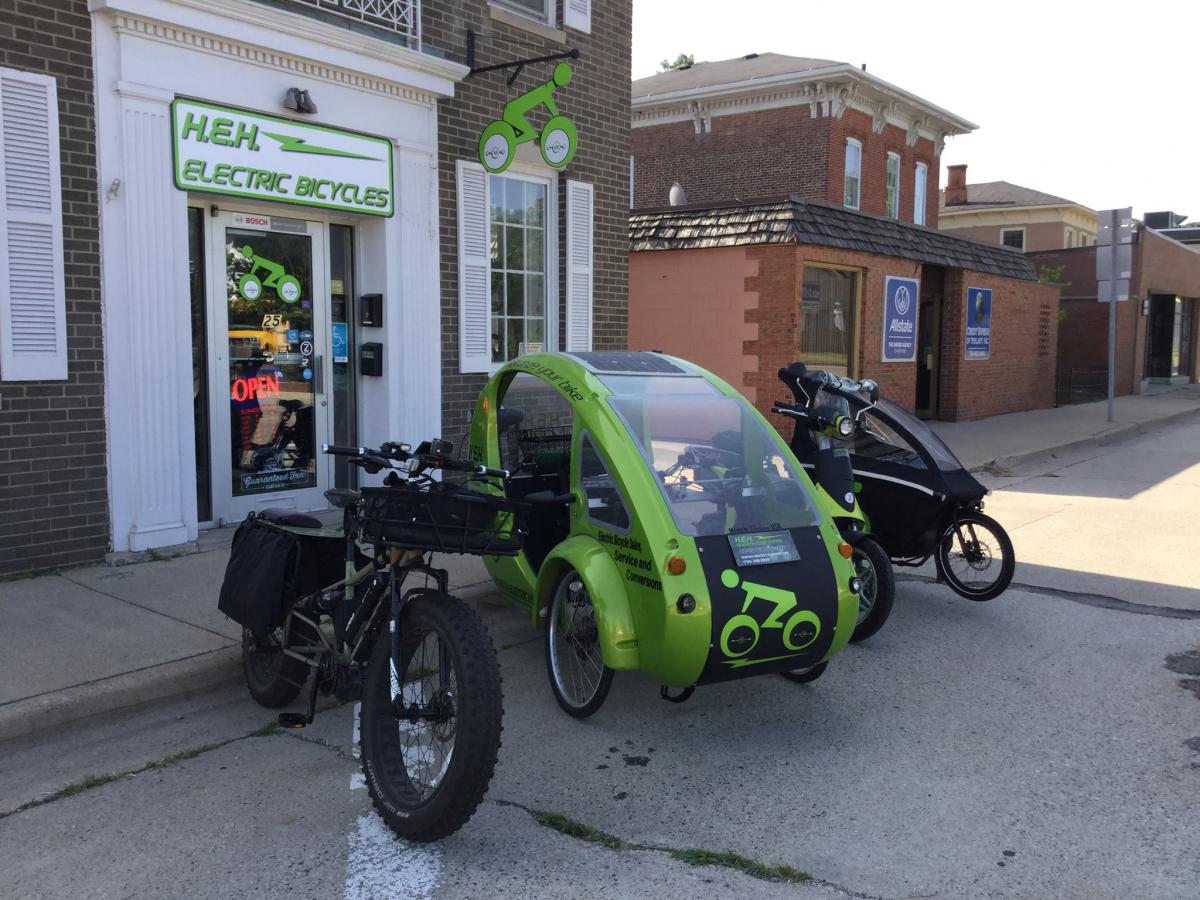
When I consider the potential of Little Vehicles, I think of my mother-in-law. With two bad knees, she can’t walk very far, not even two blocks down the street from her house to the communal dining hall in her senior-living community. So, every evening she gets in her car to drive two blocks. For her, the car has become a giant, two-ton, gas-powered wheelchair. As Baby Boomers age, more Americans will become like my mother-in-law. Without options, they too will resort to driving, or being driven, for every trip. Traditionally, we have had three choices of modes—walk, ride a standard bike, or drive a car. None of these really work for my mother-in-law. They don’t work for a lot of people, at least not all of the time. Little Vehicles offer a range of options at a scale better suited to our urban environments than the car, with a variety of vehicles tailored to different purposes and personal needs. Little Vehicles are the missing middle of transportation.
The popularity of scooters demonstrates the demand for more options to the car. According to Shaun Green, senior transportation engineer for Atlanta Beltline Inc., more than a third of scooter trips are replacing car trips in that city.1 A survey by the Portland Bureau of Transportation2 also found scooters are replacing automobile trips—one third of local respondents and nearly half of tourists and visitors said they would have taken a car if scooters had not been available. More importantly, scooters are encouraging travel by other modes. Many users are combining scooters with walking or riding transit, meaning the availability of scooters makes these modes more viable for them. More than two-thirds of the respondents in Portland said they’d never used a bike lane before riding a scooter. And even if just a small portion choose to go by some means other than a car it can have a big impact. Studies have shown that a small mode shift of four to five percent could cut congestion by as much as 25 percent.
Why cities should support Little Vehicles
Cities have many reasons to encourage this modal shift. Compared to cars, Little Vehicles are small, green, and light. Not only are they sustainably powered, their small scale means they use space more efficiently, both when in use and when they are parked (twenty scooters can fit into one car parking space.) LVs can have far greater throughput—the National Association of City Transportation Officials (NACTO) estimates that 7,500 bikes can pass through a single 10-foot wide lane in an hour, compared to between 600 and 1600 cars. Even delivery companies have come to appreciate the nimbleness of cargo bikes over the traditional box truck—in many cities FedEx and UPS are seeing faster package deliveries with e-cargo bikes. Little Vehicles create almost no emissions and noise pollution, and should they hit a pedestrian, they are far, far less likely to maim or kill that person.
But as useful as Little Vehicles are, so far scooters have generated a great deal of ire. Scooter users riding on the sidewalks imperil pedestrians. Motorists complain about having to watch out for scooter users riding in the streets. Cyclists complain about scooter users riding in the bike lanes. And everyone complains about abandoned scooters cluttering and blocking sidewalks.
The anger toward the scooters is understandable. In most cities, scooter users are suddenly competing with pedestrians and cyclists for the meager scraps of street space not dedicated for automobiles. But scooters take up vastly less road space overall than cars. Little Vehicles are far better scaled for urban streets. The solution is not to ban them, but to make room for them. With the advent of LVs like scooters, there is added pressure for cities to reprioritize non-automobile modes. Like bicycles before them, LVs are challenging the pedestrian sidewalk/automobile roadway dichotomy of the street. We need to create zones for these in-between modes. Little Vehicles are presenting us with an opportunity to rethink the street.
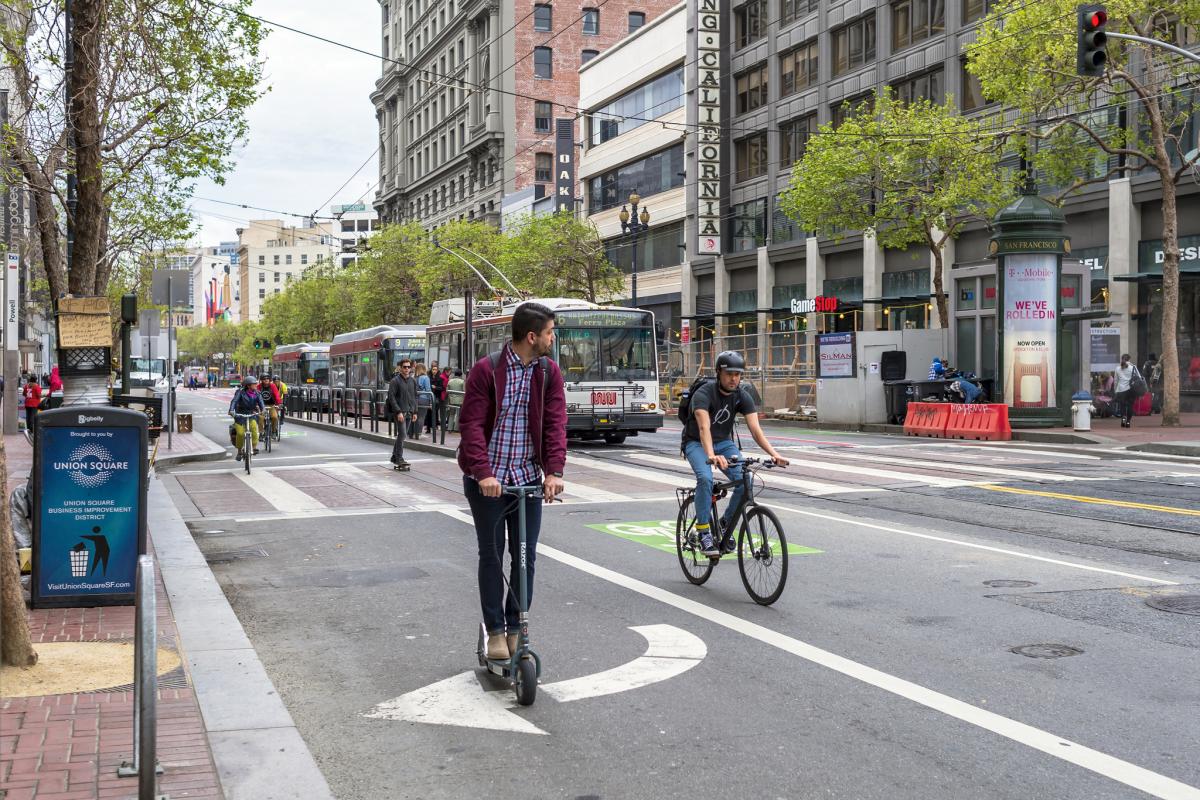
Once again, the bicycle leads the way. It’s no accident that the widespread adoption of bike share systems was accompanied by the introduction of protected bike lanes in many cities, encouraging new and more diverse kinds of riders. Protected bike lanes are also the safest place for e-scooters, as well as the many other new types of LVs, many of which are legally classified as bicycles. Protected bike lanes have been shown to dramatically increase rates of cycling; rethinking them as micro-mobility lanes could hasten the adoption of LVs. Possibly no other infrastructure investment can do more to shift people out of their cars. Instead of thinking of these as “bike” lanes, we can welcome all types of small, light, electric or human-powered low-speed not-a-cars.
In Midtown Atlanta, city officials are turning car lanes into protected bike/scooter lanes after an extensive survey found support for prioritizing scooters over cars. San Francisco’s designs for a car-free Market Street include wide protected bike lanes that can be used by LVs of all kinds. In California’s Coachella Valley, the 50-mile CV Link connects cities in the valley with a multimodal pathway system designed to accommodate low-speed electric vehicles in addition to bicyclists and pedestrians.
Assembling streets for LVs
New Urbanists, of course, think of street design in terms of type, and LV facilities should be appropriate to its street assembly and context. The bicycle facilities that are recommended in the SmartCode Bicycling Module as well as in NACTO’s Urban Bikeway Design Guide can serve all types of LVs. Such facilities include physically-separated bikeways as well as bicycle boulevards—low-speed low-volume streets where bicycles and other light-vehicles are prioritized. But with the growth in demand by a diversity of riders on all kinds of vehicles, there is added impetus to meet NACTO’s All Ages & Abilities criteria for selecting and implementing these facilities. This would open up LVs to the safe use by everyone, including children on bicycles and scooters, seniors on e-trikes, and parents ferrying their families on cargo bikes.
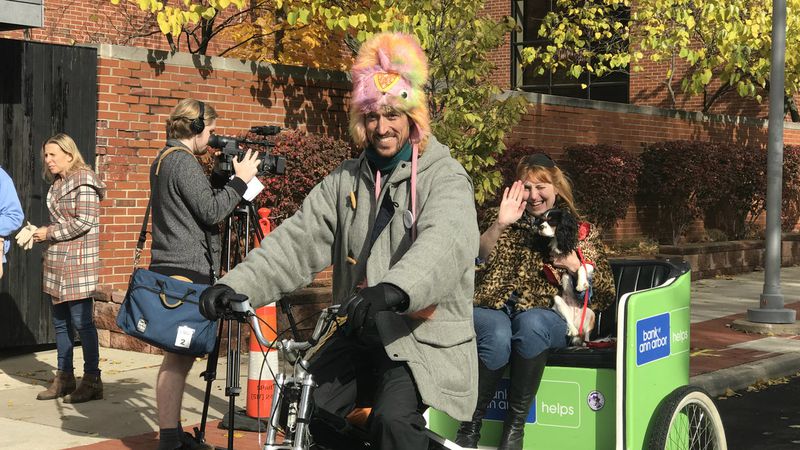
Creating dedicated space for LVs often means repurposing some of the asphalt currently given over to cars. Reducing the number of car lanes or their width has substantial benefits for the safety of all street users and can improve the efficiency of the street. Intersection design, including slower-speed geometry, queue boxes, and signal phasing, can prioritize and protect LVs and reduce conflicts with cars. Intersections designed for LVs are safer for all users of the street, including pedestrians.
Little Vehicles also offer the opportunity to repurpose the amount of space given over to parking. Much of the anger directed toward e-scooters has to do with when they are not in use and are left on sidewalks or other areas where they obstruct the public realm. Yet the great urban advantage of LVs is that they take far less space to store. Two dozen scooters can be parked in the space occupied by one car. Repurposing on-street car parking as LV parking is a much more efficient use of public street space.
Some cities have begun designating “scooter corrals” on city sidewalks, so the scooters are no longer entirely free-floating. A more permanent solution may be charging docks for scooters and electric bikes, such as the solar-powered stations by the startup Swiftmile, currently being tested in Austin. These docks make the use of scooters and bike shares more predictable: riders know where to find a charged scooter and where they can leave one. Perhaps more importantly, docking stations make the prioritization of Little Vehicles more visible in the urban landscape, signaling an investment in a safer, more efficient, greener city.
Little Vehicles allow us to think big. We can begin to consider some of the bolder moves to reclaim our cities we’re seeing in Europe, such as low-emission zones, shared streets, and pedestrianized streets and zones. The idea that we could severely restrict cars from our neighborhoods, as in Barcelona or the Marais in Paris, or from entire downtowns, as in Ponte Vedra, Spain, becomes more realizable when we have alternative personal vehicles. If cities provide safe infrastructure, more people will take to LVs. Little Vehicles can become safe, easy, and ubiquitous. With fewer cars, our cities will become greener, healthier and more livable.
At the same time, Little Vehicles can make the big city littler. Jan Gehl argues that one of the most important attributes of the cycling city is that people on bikes have faces. On a bike, an e-scooter or a skateboard, you experience the city more like a pedestrian than a passenger in a car. You are able to interact with the people around you, with opportunities for chance encounters, eye contact and other indirect social interactions that happen when you are outside a car. This human contact is the social glue that creates vital and livable cities. Little Vehicles can return us to the pleasures of city living.
1Maria Saporta, “A more urban Atlanta calls for shift to two-way streets and e-scooters.” Saporta Report, July 15, 2019. Retrieved July 18, 2019.
2Portland Bureau of Transportation, “News release: PBOT releases results of E-scooter User Survey.” October 22, 2018. Retrieved July 22, 2019.





